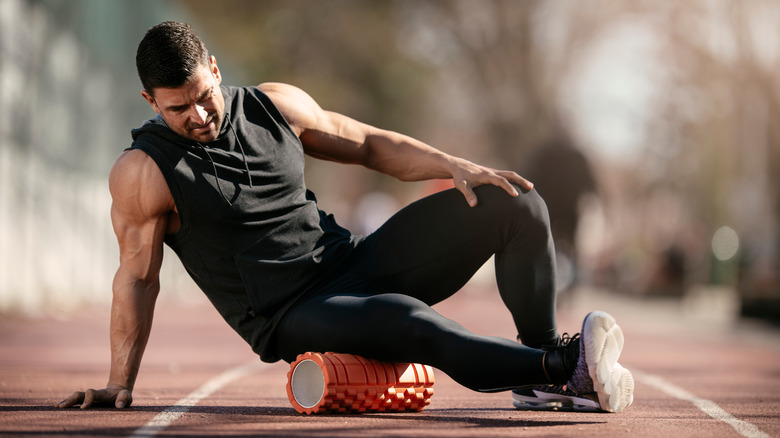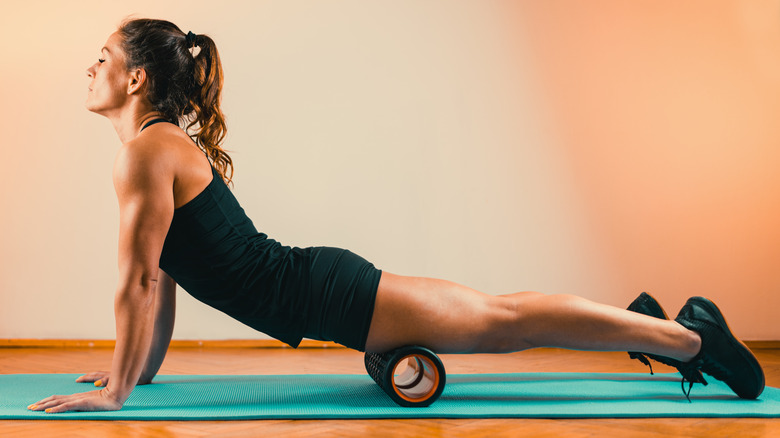The Real Health Benefits Of Foam Rolling
From athletes and weekend warriors to health experts, many are praising the benefits of foam rolling. This technique can be used before or after exercise to increase blood flow to the working muscles, relieve tension, and speed up recovery, notes Runner's World. With regular practice, it can improve your range of motion and enhance sports performance.
Also known as self-myofascial release, foam rolling can be described as a form of massage (per Harvard Health Publishing). For example, you can place the roller under your thighs, calves, or quads and then move back and forth to reduce tension and soreness. The key is to apply just enough pressure to relieve the stiffness.
"Foam rollers that have ridges or knobs on the surface are multipurpose. They can be used for myofascial release as you roll through a muscle group, but they can also be used for trigger-point release if you find a knot while foam rolling," explained athletic trainer, Leanne Wonesh, in an interview with Houston Methodist. She recommends massaging the entire muscle for one or two minutes and applying pressure to the targeted area for no more than 30 seconds.
The research on foam rolling is mixed, but most studies have promising findings. This recovery technique can be just as effective as an actual massage, as long as you do it properly.
Why you should use a foam roller as part of your training routine
Your muscles are surrounded by fascia, a layer of connective tissue that stretches during movement, explains Johns Hopkins Medicine. Intense exercise, prolonged sitting, stress, and other factors can cause the fascia to tighten up and form adhesions. Foam rolling can break down fascial adhesions and muscle knots, improving your flexibility and range of motion.
A 2019 review published in the Journal of Bodywork and Movement Therapies suggests that self-myofascial release can relieve delayed onset muscle soreness (DOMS), a condition that causes severe muscle pain and stiffness 24 to 48 hours after exercise. Therefore, it may improve post-workout recovery and allow you to perform at your peak. A 2016 study found that foam rolling can increase flexibility to a greater extent than conventional stretching when used before exercise, reports the Journal of Sport Rehabilitation.
Moreover, this form of self-massage can improve circulation and vascular function, says SCL Health. Form rolling helps loosen up tight muscles, allowing your blood to flow more easily. At the same time, it may relieve pain and tension in the back, neck, and other sensitive areas. Note, however, that you may want to think twice before placing a roller directly under your lower back because the pressure can affect your spine, liver, and kidneys, warns the National Academy of Sports Medicine. Instead, use a smaller, more flexible tool or roll your glutes, hip flexors, and other muscles that tend to cause lower back pain when they're tight.


